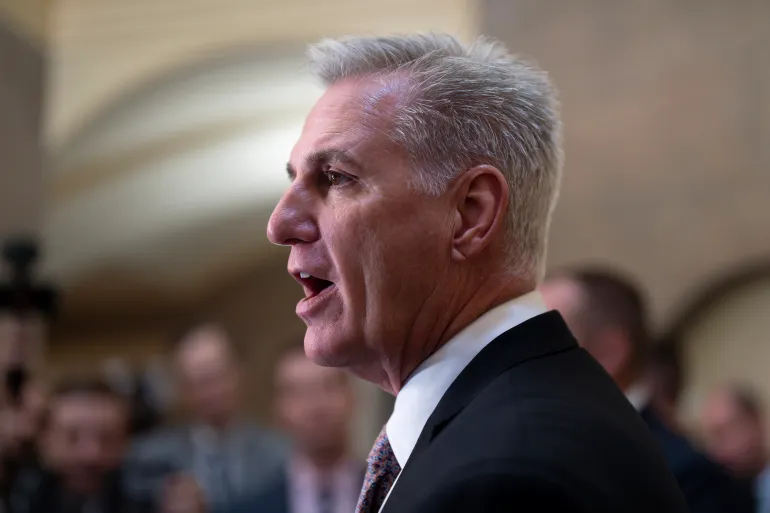The Burchett-McCarthy Elbowing Incident
In recent political news, the Burchett-McCarthy elbowing incident has sparked widespread discussions on the boundaries of political conduct. As we delve into the details of this altercation, it becomes crucial to explore the broader implications for political figures, the role of social media, and the necessity of upholding professionalism in the public eye.
I. Introduction
A. Brief Overview of the Incident
The incident in question involves an altercation between two prominent political figures, leaving many to question the standards of behavior expected from those in public office.
B. Importance of Political Conduct
Political conduct sets the tone for public discourse and reflects the values of a democratic society. When incidents like these occur, it raises concerns about the state of political etiquette and the impact on public trust.
II. The Burchett-McCarthy Elbowing Incident
A. Details of the Incident
The altercation unfolded during a heated debate, where physical contact between the two figures, Burchett and McCarthy, became a focal point. Understanding the context and the specific actions is crucial to assessing the severity of the incident.
B. Public Reaction and Media Coverage
As news of the incident spread, social media platforms were flooded with reactions, emphasizing the role of the digital age in amplifying political events. Media outlets played a significant role in shaping the narrative and public perception.
III. Understanding Political Etiquette
A. The Role of Body Language in Politics
Body language is a powerful tool in political communication. Analyzing how non-verbal cues contribute to political discourse helps in understanding the dynamics at play.
B. Historical Examples of Political Etiquette
Exploring past instances where political figures exhibited exemplary conduct can provide valuable insights into the expectations placed on current leaders.
IV. Social Media Impact
A. Virality of the Incident
The incident quickly went viral, highlighting the rapid spread of information in the digital age. Examining the factors that contribute to the virality of such events is essential for understanding their lasting impact.
B. The Power of Social Media in Politics
Social media platforms serve as a double-edged sword in politics. While they provide a space for open discourse, they also have the potential to magnify controversies, influencing public opinion.
V. Implications for Political Figures
A. Maintaining Professionalism
Political figures bear the responsibility of upholding a high standard of professionalism. Assessing the consequences of deviating from these standards is crucial for individuals in public service.
B. Impact on Public Perception
The incident has inevitably shaped public perception of the individuals involved. Examining the long-term effects on their careers and public trust is essential for understanding the broader impact.
VI. Legal Aspects
A. Assessing the Legality of Physical Contact in Politics
Legal experts weigh in on the incident, providing insights into the legal ramifications of physical altercations among political figures.
B. Historical Precedents
Reviewing historical cases where legal actions were taken against politicians for similar incidents offers context for evaluating the potential consequences.
VII. Media’s Role in Shaping Public Opinion
A. Media’s Influence on Political Perceptions
An in-depth analysis of how media narratives contribute to shaping public opinion in political incidents is crucial for fostering a nuanced understanding.
B. Responsible Reporting in Political Incidents
Media outlets play a pivotal role in disseminating information. Evaluating the responsibility of media organizations in reporting political incidents helps maintain a fair and balanced public discourse.
VIII. Reflection on Political Culture
A. Evaluating the State of Political Discourse
The incident prompts a reflection on the overall state of political discourse, encouraging a critical examination of the tone and conduct in contemporary politics.
B. Encouraging Constructive Political Engagement
Highlighting the importance of fostering constructive political engagement, even in the face of disagreements, is essential for the health of democratic societies.
IX. Lessons Learned
A. Political Figures’ Responsibility
Political figures must recognize their responsibility in setting an example for the public. Learning from past mistakes is crucial for personal and collective growth.
B. Public Expectations and Accountability
Exploring the expectations the public holds for political figures and the mechanisms in place to hold them accountable aids in shaping a more transparent and accountable political landscape.
X. Moving Forward
A. Rebuilding Public Trust
In the aftermath of such incidents, rebuilding public trust becomes a priority. Strategies for transparent communication and sincere efforts to rectify the situation are key.
B. Strategies for Improving Political Conduct
Implementing measures to improve political conduct involves a collective effort. From leadership training to fostering a culture of respect, there are various strategies to consider.
XI. Conclusion
In conclusion, the Burchett-McCarthy elbowing incident serves as a reminder of the importance of political conduct in the digital age. As we navigate the complexities of modern politics, upholding professionalism and fostering open, constructive discourse are imperative for the health of democratic societies.
